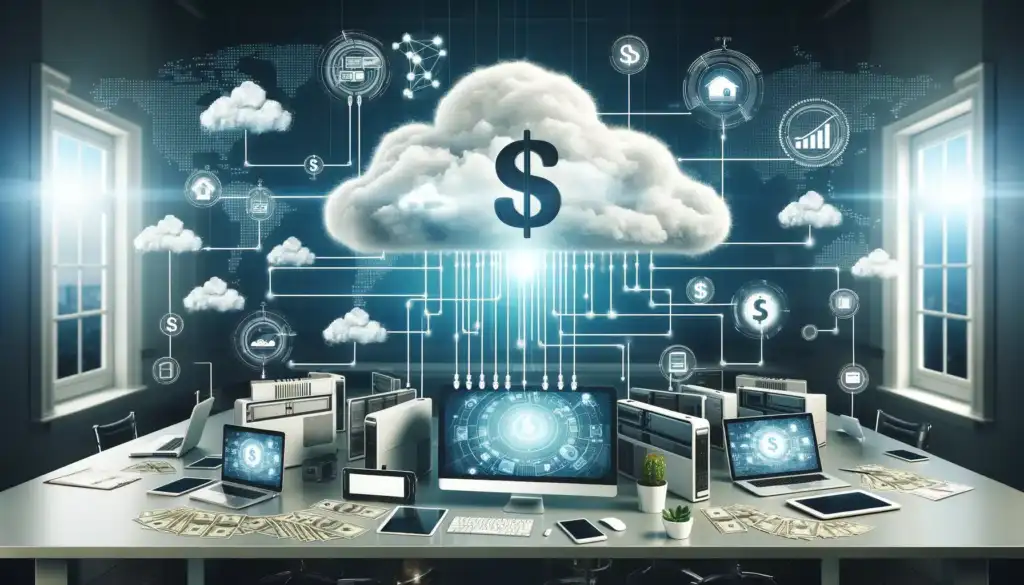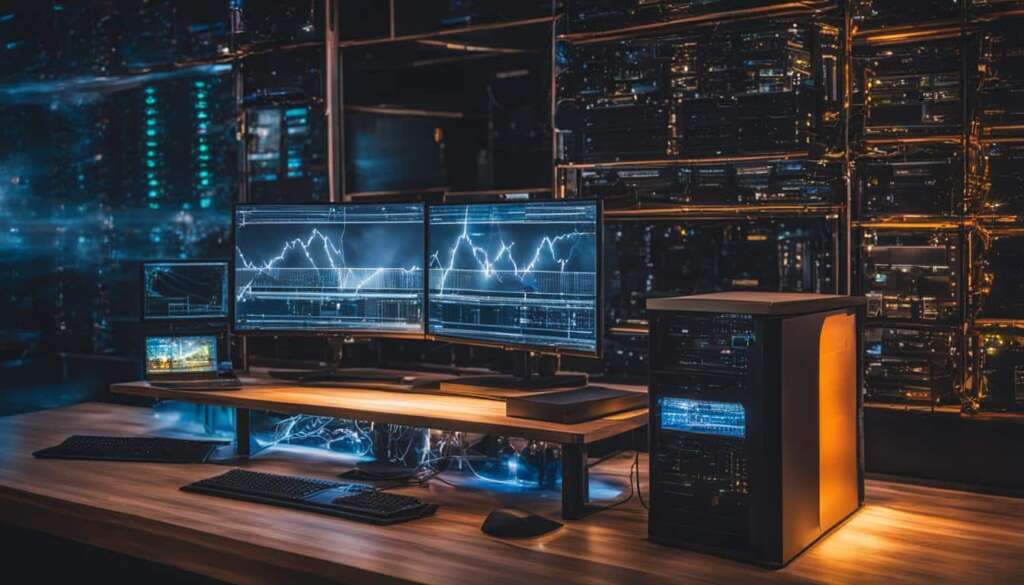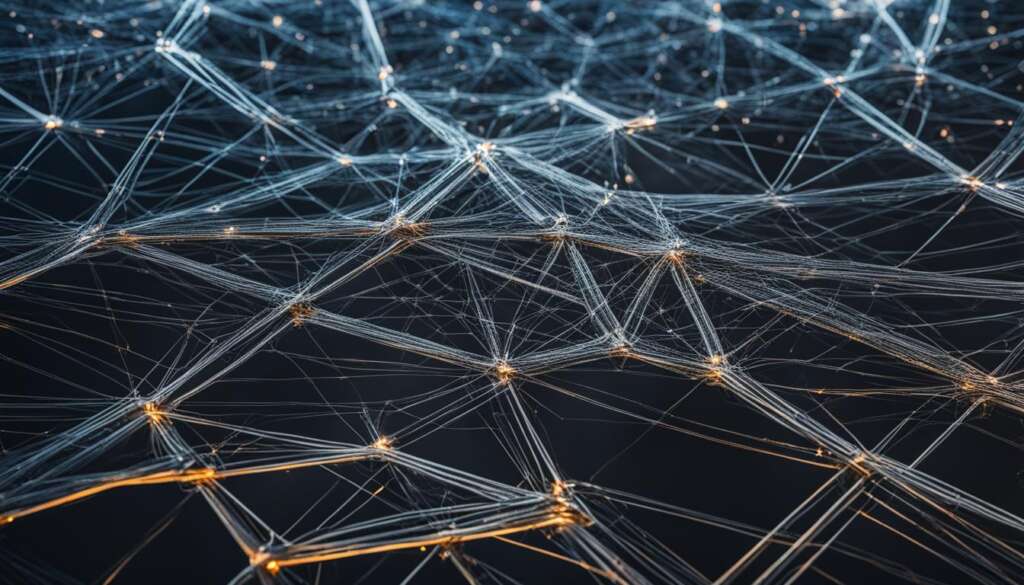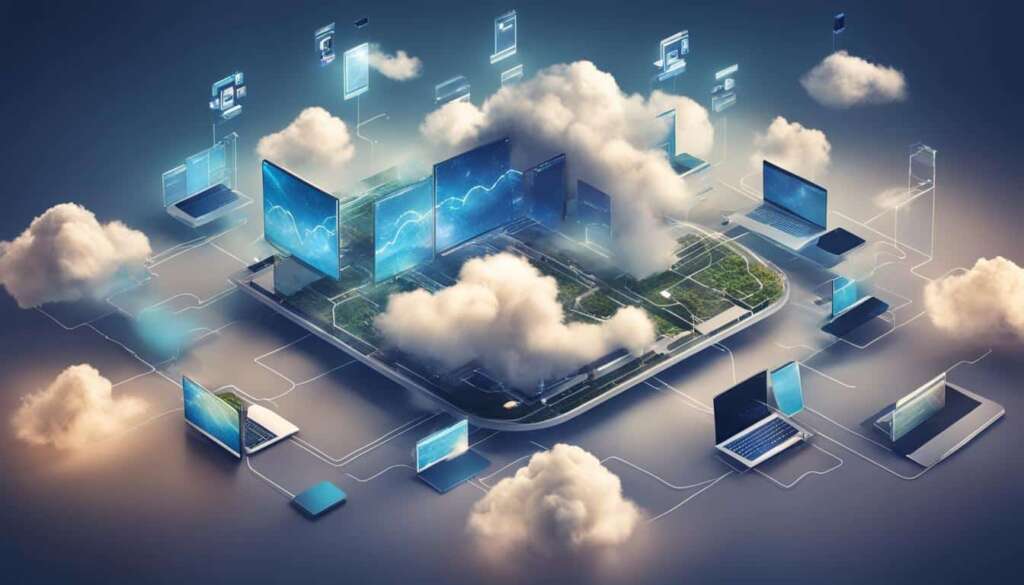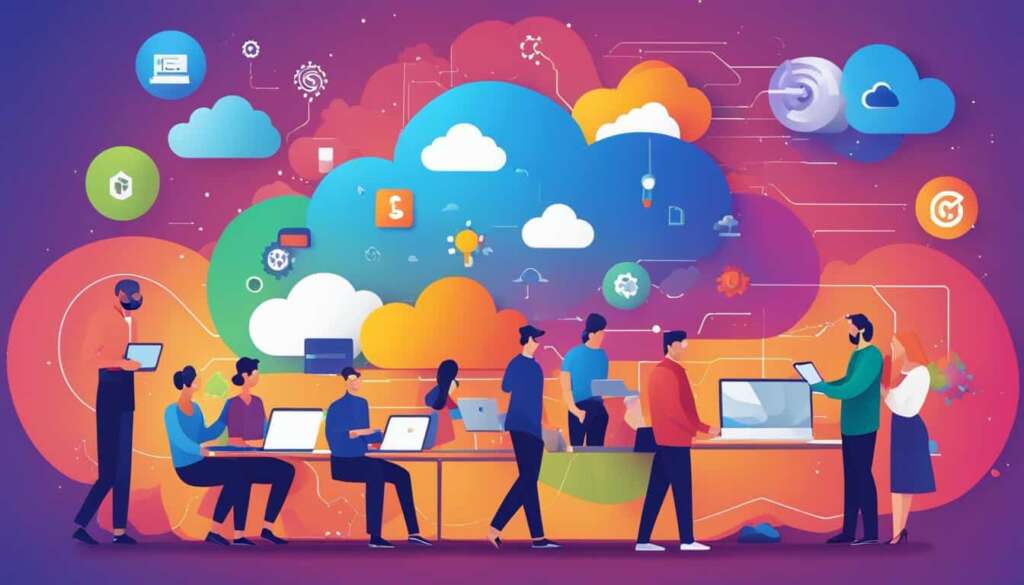Table of Contents
The first half of 2023 has witnessed a resurgence of enthusiasm about technology’s potential to catalyze progress in business and society. As computing continues to evolve, several key trends are shaping the tech world this year.
Computer programming, software engineering, and data analysis are integral components of these trends, fueling advancements in artificial intelligence (AI) and machine learning. These cutting-edge technologies are revolutionizing industries and propelling businesses to new heights.
Cloud computing has become the backbone of modern infrastructure, enabling organizations to leverage scalable resources and streamline operations. The seamless integration of computer hardware, operating systems, and computer networks has unlocked new possibilities for efficiency and collaboration.
To illustrate the impact of these trends, let’s explore some specific areas where technology is making significant strides. From AI-powered innovations to advancements in the metaverse and blockchain, the future of tech holds immense potential.
In this article, we’ll delve into the key computing trends shaping the tech world in 2023. We’ll examine the rise of AI across industries, the development of the metaverse, the progress in web3 technologies, the bridging of the digital and physical worlds, the editable nature of nanotechnology, and the groundbreaking advancements in quantum computing.
Stay tuned to learn more about these exciting trends and how they will shape the future of technology.
AI Everywhere
Artificial intelligence (AI) is set to become even more prevalent in organizations, transforming the way businesses operate and innovate. One of the key drivers behind this shift is the rise of no-code AI, which enables businesses to harness the power of AI without extensive coding knowledge or expertise. This democratization of AI allows companies to create more intelligent products and services that enhance customer experiences and drive efficiency.
In the retail market, AI is already playing a significant role in transforming the industry. From chatbots that provide personalized customer support to autonomous shopping experiences, AI is revolutionizing the way retailers interact with their customers. For instance, AI-powered chatbots can assist customers with product recommendations, answer inquiries, and even facilitate purchases. This not only improves customer satisfaction but also streamlines operations for retailers.
AI is also at the forefront of enabling autonomous delivery initiatives. Autonomous vehicles and drones are equipped with AI algorithms that allow them to navigate routes, avoid obstacles, and ensure safe and efficient delivery. These intelligent systems are transforming the logistics and transportation industry, revolutionizing last-mile delivery and enhancing overall supply chain efficiency.
No-code AI and intelligent automation are set to reshape various industries, driving innovation and efficiency. By leveraging AI, businesses can optimize processes, unlock valuable insights from data, and create intelligent products and services that cater to the evolving needs of customers.
Parts of the Metaverse Will Become Real
The metaverse, a more immersive internet where people can work, play, and socialize, will see advancements in augmented reality (AR) and virtual reality (VR) technology. The work environment in the metaverse will become more immersive, allowing for virtual meetings and collaboration. Advanced avatar technology will also be developed, enabling avatars to mimic human characteristics and act as representatives in the metaverse. Companies will utilize metaverse technology for training and onboarding purposes.
With the continuous improvements in augmented reality and virtual reality, the metaverse is becoming an increasingly realistic and interactive digital realm. Augmented reality overlays virtual elements onto the real world, enhancing our perception and experience of the physical environment. Virtual reality, on the other hand, immerses users in entirely virtual environments, providing a sense of presence and interactivity.
One of the key applications of augmented reality and virtual reality in the metaverse is the transformation of the work environment. Instead of traditional office spaces, employees can work and collaborate in virtual offices that replicate real-world settings or offer entirely new and imaginative environments. Virtual meetings will become more dynamic and engaging, with the ability to interact with digital objects and spatial audio enhancing communication and collaboration.
Avatar technology is another crucial aspect of the metaverse. Avatars are digital representations of individuals that can be customized to resemble their real-world counterparts or take on completely different forms. In the metaverse, avatars will become more lifelike, utilizing AI-enabled technology to mimic human expressions, gestures, and behaviors. This advancement in avatar technology will enable more authentic and immersive interactions within digital projects and social experiences.
Companies will leverage the metaverse for various purposes, including training and onboarding. With AI-enabled avatars, employees can undergo realistic virtual training simulations, allowing them to practice and learn in a safe and controlled environment. This immersive training experience can enhance skills development and accelerate the onboarding process, enabling employees to quickly familiarize themselves with new roles and responsibilities.

The metaverse presents exciting opportunities for businesses to reimagine work, training, and collaboration. The integration of augmented reality, virtual reality, and advanced avatar technology will transform the way we interact and engage in the digital realm, blurring the lines between the physical and virtual worlds.
Progress in Web3
Blockchain technology continues to advance, transforming various industries with its decentralized nature and secure data storage capabilities. One of the key areas where blockchain technology is making significant progress is in supply chain management and financial services.
Decentralized products and services built on blockchain technology offer increased transparency, efficiency, and trust in supply chains. Companies can track and manage the movement of goods across the supply chain, minimizing fraud, counterfeit products, and improving overall efficiency.
Financial services are also benefiting from blockchain technology. The decentralized nature of blockchain allows for secure and transparent transactions, reducing the need for intermediaries and eliminating the risk of fraud. Blockchain encryption ensures the integrity and privacy of financial transactions, protecting sensitive data from unauthorized access.
In addition, the rise of Non-fungible tokens (NFTs) has revolutionized various industries, including ticketing, art, and contracts. NFTs provide a unique digital ownership experience, ensuring authenticity and provenance. They have opened up new possibilities for creators, artists, and collectors, enabling them to monetize digital assets and intellectual property.
Application of Blockchain in Supply Chain Management
Blockchain technology offers immense potential in supply chain management. By leveraging blockchain, companies can create transparent and traceable supply chains, ensuring the authenticity and integrity of products.
| Benefits of Blockchain in Supply Chain Management | Use Cases |
|---|---|
|
|
The Rise of NFTs
Non-fungible tokens (NFTs) have gained widespread attention and popularity in recent years. NFTs are unique digital assets that can represent ownership of various items, including artwork, collectibles, and virtual real estate.
NFTs have brought digital ownership to the forefront, providing a new way for creators to monetize their work and for collectors to own and trade digital assets. They have disrupted traditional industries, allowing artists and content creators to sell their work directly to consumers without the need for intermediaries.
Table: Use Cases of NFTs
| Industry | Use Case |
|---|---|
| Art | Selling digital artwork as NFTs, providing provenance and authenticity. |
| Ticketing | Converting event tickets into NFTs to combat ticket fraud and scalping. |
| Music | Selling music rights and royalties as NFTs, offering direct artist-fan engagement. |
| Gaming | Tokenizing and owning in-game assets and virtual real estate. |
As blockchain technology continues to evolve, more industries are exploring its potential to create decentralized products, services, and data storage solutions. The progress in Web3 signifies a transformative shift in how businesses and consumers interact with technology, resulting in increased security, transparency, and efficiency.
Bridging the Digital and Physical World
As technology continues to advance, the gap between the digital and physical worlds is being bridged through various innovative solutions. Two notable technologies that are playing a significant role in this transformation are digital twin technology and 3D printing. Let’s explore how these technologies, along with IoT devices, cybersecurity, autonomous vehicles, and precision robotics, are revolutionizing industries and shaping the future.
Digital Twin Technology: Simulating Real-World Processes
Digital twin technology is a powerful tool that allows businesses to create virtual replicas of physical assets, systems, or processes. These digital twins provide a comprehensive view of the real-world counterpart, enabling businesses to monitor, analyze, and optimize performance in a virtual environment. Digital twins can simulate various scenarios, allowing engineers to test new ideas, identify potential issues, and make informed decisions before implementing them in the physical world. This technology has applications across industries such as manufacturing, energy, and healthcare.
3D Printing: Turning Digital Data into Physical Components
3D printing, also known as additive manufacturing, is revolutionizing the way physical objects are created. It allows the transformation of digital designs into tangible products by adding layer upon layer of material. Engineers can use the data from digital twins to directly manufacture physical components through 3D printing. This enables faster prototyping, customization, and cost-effective production. The applications of 3D printing span across industries, including aerospace, automotive, and healthcare.
IoT Devices: Expanding Connectivity and Data Collection
The Internet of Things (IoT) has paved the way for a multitude of devices and sensors to be interconnected, enabling seamless communication and data exchange. IoT devices are transforming industries by providing valuable insights and real-time information about processes, assets, and environments. From smart homes to smart cities, IoT devices are driving efficiency, automation, and enhanced decision-making. However, the proliferation of IoT devices also raises cybersecurity concerns that need to be addressed to ensure data protection and privacy.
Cybersecurity: Safeguarding Digital Interactions
With the increasing reliance on technology and the interconnectedness of devices and systems, cybersecurity has become paramount. Organizations need robust cybersecurity measures to protect their digital assets from threats, such as unauthorized access, data breaches, and malware attacks. As the digital and physical worlds converge, cybersecurity becomes even more critical to ensure the integrity, confidentiality, and availability of data and systems.
Autonomous Vehicles: Transforming Transportation
Autonomous vehicles, powered by advanced technologies such as artificial intelligence and sensor systems, are set to revolutionize transportation. These vehicles have the potential to improve road safety, reduce traffic congestion, and enhance mobility for all. Autonomous vehicles rely on digital twin technology and IoT devices to gather data about their surroundings, make informed decisions, and navigate through complex environments. However, ensuring the cybersecurity of autonomous vehicles is crucial to prevent potential risks and vulnerabilities.
Precision Robotics: Enhancing Efficiency and Accuracy
Precision robotics combines advanced robotics with artificial intelligence, machine learning, and sensor technologies to perform complex tasks with high precision and accuracy. These robots play a crucial role in industries such as manufacturing, healthcare, and agriculture, where precision and repeatability are paramount. Digital twin technology and IoT devices enable remote monitoring, control, and optimization of precision robots, maximizing their efficiency and minimizing downtime.
Advancements Enabled by Bridging the Digital and Physical World
| Advancement | Benefit | Relevant Technology |
|---|---|---|
| Simulation of real-world processes | Improved decision-making and optimization | Digital twin technology |
| Customizable and cost-effective production | Faster prototyping and reduced manufacturing costs | 3D printing |
| Enhanced connectivity and real-time data | Efficiency, automation, and improved decision-making | IoT devices |
| Data protection and privacy | Safeguarding digital assets and ensuring confidentiality | Cybersecurity |
| Improved road safety and reduced congestion | Enhanced mobility and transportation efficiency | Autonomous vehicles |
| Precision and accuracy in complex tasks | Optimized productivity and quality | Precision robotics |
Increasingly Editable Nature
Advancements in nanotechnology are revolutionizing multiple industries and enabling the creation of materials with extraordinary properties. By manipulating matter at the atomic and molecular levels, scientists and engineers are developing materials with enhanced characteristics, such as improved strength, flexibility, and resilience. These cutting-edge innovations in nanotechnology offer endless possibilities for industries ranging from electronics and healthcare to construction and energy.

Gene editing has emerged as a breakthrough technology that holds immense promise for addressing various genetic disorders and enhancing agricultural practices. Among the most significant tools in gene editing is CRISPR-Cas9, a revolutionary technique that allows scientists to modify DNA with unprecedented precision. With CRISPR-Cas9, it is possible to correct harmful DNA mutations responsible for genetic diseases and even prevent them altogether by editing the genes of embryos. This breakthrough has sparked optimism among researchers in the fields of medicine, genetic engineering, and biotechnology.
Furthermore, gene editing holds tremendous potential in the field of agriculture. By altering the genetic makeup of crops, scientists can develop plants that are resistant to diseases, pests, and environmental stresses, leading to increased yields and improved agricultural sustainability. Additionally, gene editing can help tackle critical issues such as food allergies by altering the genetic composition of food products to make them safe for consumption by individuals with allergies or intolerances.
The possibilities of gene editing extend even further, with scientists exploring its potential for modifying human characteristics. Although still in the early stages of research and development, gene editing techniques offer the possibility of enhancing human traits such as eye and hair color. This exciting prospect opens up a new realm of possibilities in the realm of personal aesthetics.
Through the combination of nanotechnology and gene editing, the natural world is becoming increasingly editable. These advancements have the potential to reshape various industries, from medicine and agriculture to personal aesthetics and beyond.
Quantum Progress
Quantum computing is a major technological leap that is expected to revolutionize the world of computing. By harnessing the principles of quantum mechanics, quantum computers have the potential to process information a trillion times faster than traditional processors. This exponential increase in computing power opens up new possibilities for solving complex problems and conducting advanced simulations that were previously unimaginable.
Subatomic particles play a crucial role in the functioning of quantum computers. These particles, such as electrons and photons, can exist in multiple states simultaneously, thanks to a phenomenon known as superposition. By manipulating these particles, quantum computers can perform calculations in parallel and arrive at solutions much more quickly than classical computers.
While the promise of quantum computing is immense, it also presents significant challenges, particularly in the realm of encryption. Currently, many of our encryption methods rely on the difficulty of factoring large numbers, a problem that is easily solved by quantum computers. This means that current encryption practices could become obsolete in the face of quantum computing, posing a threat to the security of sensitive information.
The importance of quantum computing has sparked a global race among countries to develop this technology at scale. Governments and private companies alike are investing heavily in quantum research and development, recognizing the potential economic and strategic advantages of being at the forefront of this technological revolution.
As quantum computing continues to advance, the impact on security systems and operational risks cannot be ignored. The ability to quickly break existing encryption methods could have far-reaching consequences, affecting industries such as banking, healthcare, and national security. Organizations must now start preparing for a future where quantum attacks become a reality, taking steps to secure their systems and adapt their cybersecurity strategies.
Conclusion
The computing trends of 2023 represent a significant leap forward in technology advancements, paving the way for the future of tech. From the widespread adoption of artificial intelligence (AI) and the emergence of the metaverse to the continued progress in blockchain and quantum computing, these trends will shape various industries and drive innovation.
It is crucial for businesses to stay informed about these computing trends in order to adapt and harness their potential for growth and success. AI, with its ability to augment tasks and processes, will revolutionize the way organizations operate and interact with customers. The metaverse, as a more immersive internet, will transform how people collaborate, learn, and socialize in virtual environments.
Additionally, blockchain technology will enhance data security and revolutionize supply chain management and financial services. Quantum computing, though still in its early stages, holds the promise of solving complex problems at an unprecedented speed, yet it also poses challenges for existing encryption methods.
As we move forward into the future, it is clear that these computing trends will shape the way we work, live, and interact with technology. Businesses that embrace these advancements and adapt to the changing landscape will be well-positioned to thrive in the ever-evolving tech world.
FAQ
What is one of the significant technology trends in 2023?
Generative AI is one of the significant technology trends with high potential and applicability across most industries.
How can businesses leverage the power of AI?
Businesses can leverage the power of AI through the rise of no-code AI, which allows them to create more intelligent products and services.
In which industries is AI being utilized?
AI is being utilized in various industries, including retail where it is used for inventory management and automation of convenience trends such as BOPAC, BOPIS, and BORIS. AI is also the engine behind autonomous delivery initiatives.
What advancements can be expected in the metaverse?
Advancements in the metaverse include augmented reality (AR) and virtual reality (VR) technology. The work environment in the metaverse will become more immersive, allowing for virtual meetings and collaboration. Advanced avatar technology will also be developed, enabling avatars to mimic human characteristics and act as representatives in the metaverse.
How can companies utilize metaverse technology?
Companies can utilize metaverse technology for training and onboarding purposes.
What areas will be revolutionized by blockchain technology?
Blockchain technology will revolutionize areas such as supply chain management and financial services. It will improve data security and accessibility through decentralized data storage using blockchain encryption. Non-fungible tokens (NFTs) will also become more usable and practical, transforming areas such as ticketing and contracts.
How can digital twin technology and 3D printing bridge the gap between the digital and physical world?
Digital twin technology can be used to simulate real-world processes and test new ideas, while 3D printing allows engineers to create physical components based on the digital twin data. These technologies enable advancements in autonomous vehicles and precision robotics.
What advancements can be expected in nanotechnology?
Advancements in nanotechnology will allow for the creation of materials with new features, such as water resistance and self-healing capabilities.
What can gene editing technology achieve?
Gene editing technology, particularly with tools like CRISPR-Cas9, can enable the editing of DNA to correct mutations, solve food allergy problems, enhance crop health, and potentially modify human characteristics like eye and hair color.
What is quantum computing and how will it impact industries?
Quantum computing is a major technological leap that is expected to bring computers capable of processing information a trillion times faster than traditional processors. However, it also poses the risk of rendering current encryption practices useless. The development of quantum computing will impact security systems and operational risks in various industries.
What do the computing trends of 2023 indicate?
The computing trends of 2023 indicate rapid advancements in technology that are shaping the future. From AI and the metaverse to blockchain and quantum computing, these trends will have a significant impact on various industries. It is important for businesses to stay informed about these emerging trends and adapt to leverage their potential for growth and innovation in the tech world.



